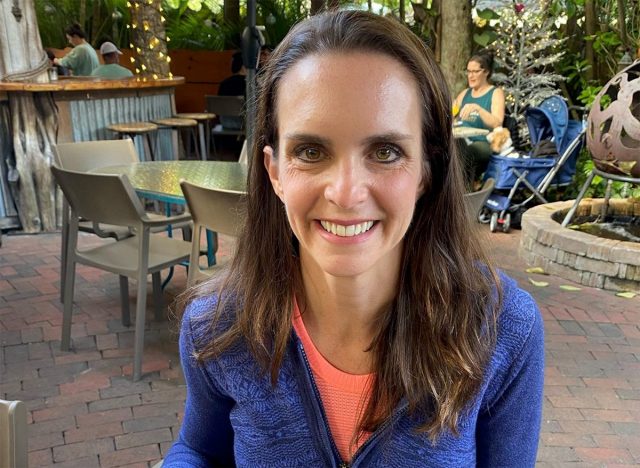I'm a Nutritionist and Banned These 4 Harmful Food Additives From My Kitchen
Are you eating foods with toxic additives but don't even know it? According to one top nutritionist, it's very likely. Lots of food contains hidden ingredients that could have a negative impact on your health, ranging from making you hungrier to potentially adding to your risk of developing cancer. Body Network's Resident RDN, The Diet Diva Tara Collingwood, reveals the top four to look out for and what to eat instead.
Avoid: High Fructose Corn Syrup

First on her list of toxic additives is high fructose corn syrup."Just like the name says, HFCS is a syrup made from corn, but it has a higher fructose content than normal sugar or corn syrup. It is inexpensive to make, so a lot of food companies use it to sweeten foods like soft drinks, candy, cookies, pastries, and other processed foods," explains Collingwood, MS, RDN, CSSD, LD/N, ACSM-CPT, a Board Certified Sports Dietitian and co-author of the Flat Belly Cookbook for Dummies.
"HFCS is added sugar without nutritional value and is often found in high calorie, low nutrient foods. HFCS has been linked to increasing belly fat and causing high blood sugar levels, leading to diabetes. It has also been shown to cause inflammation in the body, which may contribute to chronic diseases like heart disease, certain cancers, and diabetes."
RELATED: Woman Quit Alcohol For 30 Days and These 8 Changes Stunned Her Doctors
Instead, Use 100 Percent Fruit Juice to Sweeten

Instead of HFCS, try using 100% fruit juice, says Collingwood. "It great to sweeten," she says. "Applesauce and dates are also great options. "Or just avoid foods sweetened with HFCS and eat fresh fruit instead!"
Avoid: White Flour

White flour is highly processed. "The processing takes away the bran (fiber) and germ (nutrients), leaving just the endosperm of the grain, which is very starchy. Without the bran, the flour raises blood sugar quickly and doesn't contribute to the feeling of fullness," says Collingwood.
Instead, Use Whole-Wheat Flour

A great white flour alternative? "Try to substitute some whole-wheat flour for white flour in recipes to reduce the amount of white flour and get some fiber and more nutritional value," says Collingwood.
RELATED: She Transformed Her Body with These 4 "Lazy Girl" Weight Loss Hacks
Avoid: Nitrites and Nitrates

Nitrates and nitrites, found in meats that are preserved, like in beef jerky, bacon, ham, and sausage, are a no-no as well. "They help to preserve the meat from spoiling, give it a pink color, and add flavor as well," she says.
They May Cause Cancer

"Nitrites and nitrates can turn into nitrosamine when heated at a high temperature," she continues. "Nitrosamine has been linked to causing cancer and may also have detrimental effects on heart health."
Avoid Titanium Dioxide

Titanium dioxide is another ingredient you should avoid. "You don't always see this on a food label because it might be disguised as 'added color' or 'artificial color,'" she says. "It is commonly found in foods with color added, like candy, gum, icing, sauces, alcoholic beverages, and more. It has been banned in the European Union because of the connection to Lung cancer, but it is still found here in the US, although California has banned it in the use of Skittles in the state."
RELATED: Woman Lost 40 Pounds With These 10 Foods Instead of Ozempic And Kept It Off 5 Years
Look for Terms Like "Added Color" or "Artificial Color"

"Since it is added at the food manufacturing level, you can't really do anything about it as a substitute," she says. However, she does suggest reading labels and avoiding foods that are highly colored or use the terms "added color" or "artificial color." And if you enjoyed this article, don't miss I'm a Nutritionist and Here Are 25 Weight Loss Truths You Need to Hear.





